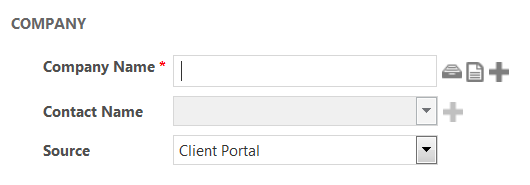Request IT Services and Incident Management
An incident is a failure or disruption to an IT service or configuration. The following describes how you can request IT services and we, as your MSP, handle reported incidents:
1. Service Ticket Creation
Incidents get assigned a Service Ticket. There are various ways in which a service ticket can be created:
- TCSP Monitoring Platform
- Automatic Alerts
- By Phone
- By Email
- By Fax
Service Ticket gets created using the company and contact person who reported the issue within your organization. The Contact Name is referenced to report the progress and completion of the Service Ticket.

2. Service Ticket Prioritization
Service Tickets get assigned a Status, Ticket Type, Priority, Issue Type, Sub-Issue type. An estimated Due Date/Time is entered into the Service Ticket. Incidents can affect your organization differently. Define the Priority based on the impact and urgency of your service request.

3. Assignment and Categorization
Service Ticket rules allow you to automate a Primary Resource and the assignment of the incidents. You can also automate rules based on the pattern of failure and the incidents to be automatically assigned to Primary Resources (Technicians), Secondary Resources (Technicians) and Queue. The Primary Resource is the person who is responsible for the ticket and tracks progress. Secondary Resources are others who will perform work alongside the primary on the ticket.

4. Associated Configuration and User Defined Fields
Enter a configuration item associated with a Service Ticket for management and reporting purposes.

System can be preconfigured for User-Defined Fields to collect data and use for reporting purposes.

5. Notification
Select TCSP resources and/or your organization additional contacts to notify any progress and completion on your Service Ticket.

6. Service Ticket Diagnosis
When a Service Ticket gets created, it has to be analyzed, updated and a solution has to be delivered. Service Ticket Time Entries allows TCSP technicians to document the time and work performed. This information is later used by management for productivity reports and other metrics reports.

7. Escalations & SLAs
When an assigned resource is unable to resolve the Service Ticket, (i.e. when it is not a known error) the Service Ticket can be assigned to the second-level support. The Service Ticket will get escalated to the third-level support when the second-level support is unable to resolve it within the Estimated Due Date/Time. Service Level Agreement (SLA) helps your organization prioritize Service Tickets and enabling these timely escalations.

8. Service Ticket Completion
TCSP technicians report to end-users the completion of the requested ticket and its final resolution. This time entry must be completed before Service Tickets can be closed in the system. Users have an opportunity to evaluate the information and report any unsolved issues. Service Tickets statuses get marked and time stamped as Completed. This completion process ensures that all the Service Tickets have a proper resolution added to it before it is closed.
9. Survey
User satisfaction surveys help in identifying the satisfaction level of end-users and knowing the performance of the support technicians in resolving Service Tickets. The performance of the support technician and the Service Desk can be measured and improved based on the survey results.
Service Desk Metrics
By taking a metrics-based approach to service desk performance, managers can spot a variety of problems as well as underlying issues that may be causing internal inefficiencies in meeting employees and service desk expectations. Metric reports show a series of horizontal bar graphs that measure the actual performance of the support team against self-determined goals based on efficiency, accountability and intelligence.

 TCSP
TCSP



